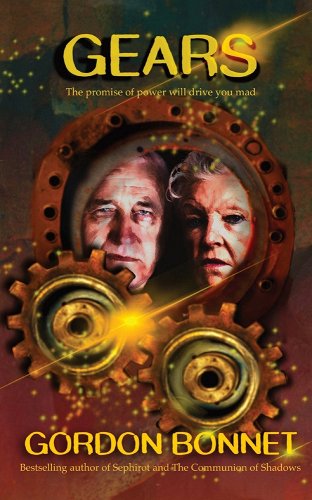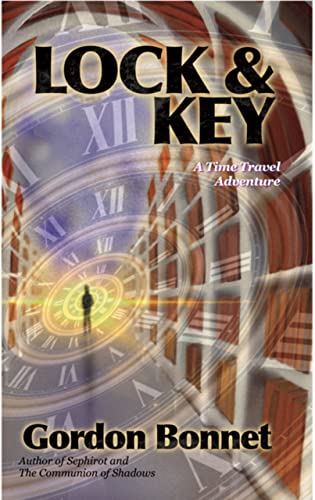Even though I’m a fiction writer, I spend a lot of time reading non-fiction, and I consider that at least as important to my craft as reading fiction. After all, the more you know about the world, the more you’ll have at your fingertips to write stories about. My novel Gears was inspired by an article on archaeology in Scientific American; I wouldn’t have written Lock & Key if it hadn’t been for a conversation with my younger son about the Many-Worlds Theory of quantum physics.
Then, there’s just the fact that the more you learn and understand, the more you appreciate the beauty, complexity, and weirdness of the universe we live in.
So here are a few suggestions for some cool non-fiction reads. They mostly (of course) center around my own interests, but maybe there’ll be some overlap with yours—and you’ll pick up a couple of new (or old!) books to read.
I’ll start with a four-for-one; John McPhee’s amazing quartet of books about the geology of North America, Rising From the Plains, Basin and Range, In Suspect Terrain, and Assembling California. These aren’t recent books—the final one in the series was published in 1993—and some of the information in them has been superseded by newer research, but if you want a comprehensive overview of the structure and ancient history of the North American continent, this is a great place to start. And typical of McPhee’s books, they always come at it from the human angle, with extensive interviews with the women and men who have spent their lives studying American geology.
From Eternity to Here: The Quest for the Ultimate Theory of Time by Sean Carroll tackles one of the most vexing unsolved problems in physics; why do we perceive an arrow of time? Einstein showed that time is inextricably linked to the three dimensions of space, so why can we move freely in space, but only one direction—from past to future—through time? (Discounting the many works of fiction, including some of my own, that include time travel.) Even Einstein said, “Time is only an illusion, but it is a remarkably persistent one.” The answers Carroll arrives at are mind-blowing.
I’ve always had a fascination for Roman history, and Mary Beard’s SPQR: A History of Ancient Rome is a brilliant read, taking one of the most famous civilizations of Europe and tracing it from its founding through its fall. Somewhat in the same vein, Bryan Sykes’s Saxons, Vikings, and Celts: The Genetic Roots of Britain and Ireland not only looks at ancient history, but weaves in another interest of mine, genetics. (It gave me an interesting lens into the Scottish heritage that makes up a quarter of my own ancestry.)
Michael J. Benton’s When Life Nearly Died: The Greatest Mass Extinction of All Time takes a grim look at the cataclysmic Permian-Triassic Extinction of 251 million years ago, which dwarfed the much more famous wipeout the dinosaurs experienced 66 million years ago. The earlier extinction erased, by most estimates, somewhere between ninety and ninety-five percent of life on Earth. Why it happened, and how some living things made it through the bottleneck, make for fascinating reading.
The Glass Universe: How the Ladies of the Harvard Observatory Took the Measure of the Universe, by Dava Sobel, tells the story of the “Harvard Computers”—women hired to do mathematical computations of astronomical data during the late nineteenth and early twentieth century, a time when opportunities for women in science were all but nonexistent. Their contributions to our understanding of the stars are astonishing in their breadth and depth, and that they persisted despite the impediments to their participation in research is nothing short of inspirational.
James Burke’s The Day the Universe Changed (not only an excellent book but a fantastic ten- part miniseries) considers the role of chaos in the history of science—how “one thing leading to another” often takes curious minds very far away from their starting point. All of Burke’s books are masterful—most famously Connections, but also Circles: Fifty Round Trips Through History, Science, Technology, and Culture and The Pinball Effect: How Renaissance Water Gardens Made the Carburetor Possible. Whenever I read or watch Burke it’s always a little like watching a skilled magician and waiting to see how he’s going to pull the rabbit out of the hat.
Anything by renowned astrophysicist Neil deGrasse Tyson is gonna be good, but I’ll single out To Infinity and Beyond: A Journey of Cosmic Discovery (co-authored by Lindsey Nyx Walker) as particularly wonderful. In lucid layperson’s terms, Tyson takes us off the surface of the Earth and out through our galaxy and to the farthest reaches of the universe, giving us a vista of spellbinding beauty and wonder.
So, those are a few of my favorites. Do you have any suggestions for me? Always looking for a
good new read!


